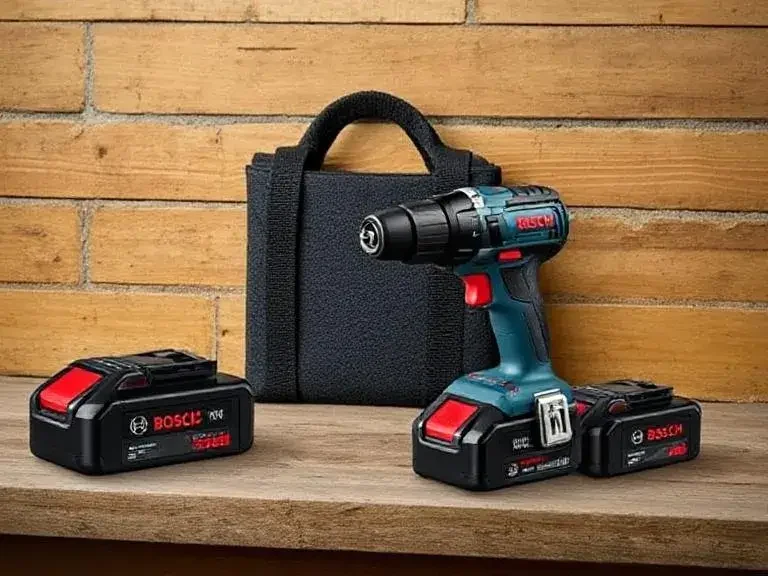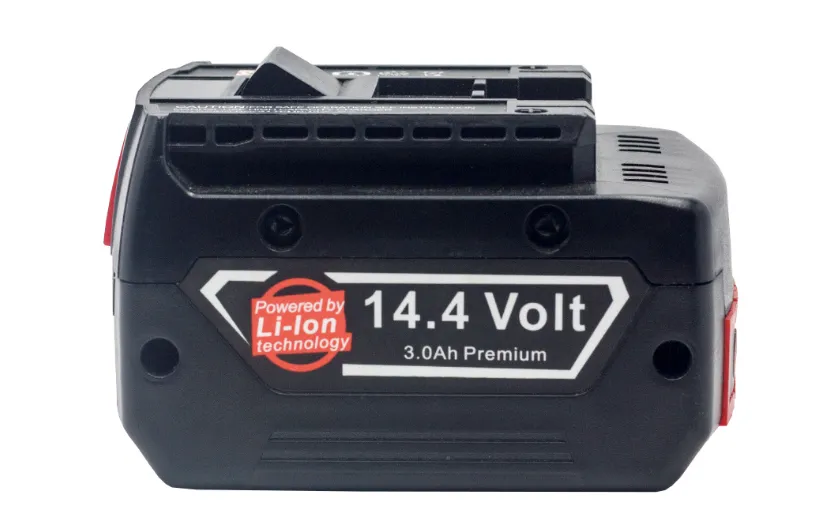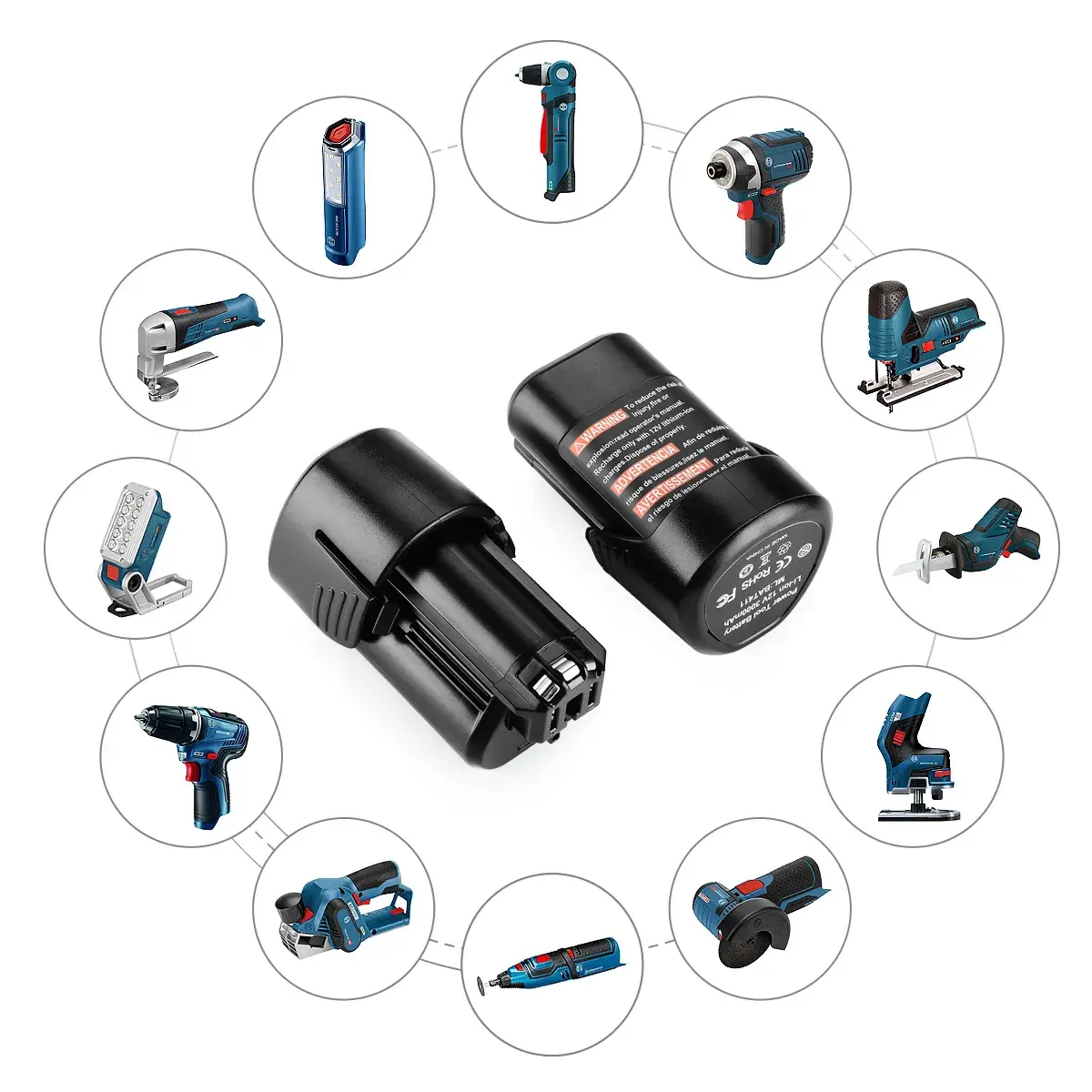Bosch Power Tool Batteries: Maintenance Hacks & Best Alternatives
Keeping Bosch Core18V lithium batteries at 20%–50% capacity, 0–40°C cool and dry storage, and using the original charge and discharge cycle and wipe the contacts every 1–2 months can increase the cycle life to more than 500 times, saving $150–$300. Upgrading to 8.0 Ah/12.0 Ah ProCORE18V or purchasing the 20%–30% more affordable XNJTG smart BMS battery pack can achieve longer battery life and high performance.

Store Bosch batteries at 20–50% charge in a cool, dry spot and avoid temperatures above 104°F (40°C) or below 32°F (0°C). Every 1–2 months, run a full discharge-charge cycle on the original Bosch charger and wipe terminals with isopropyl alcohol. For more runtime, upgrade to Bosch ProCORE18V 8.0 Ah or 12.0 Ah packs featuring high-drain cells.
Proper care can extend your Bosch lithium-ion pack’s lifespan by up to 3×, saving you hundreds in replacement costs. When it’s time to upgrade, we’ve curated the smartest, safest alternatives that match or exceed OEM performance.
> Insight: The global aftermarket battery market is projected to grow at 8% CAGR through 2026, driven by demand for cost-effective, high‑performance Li‑ion packs and smart BMS integrations.
1. Why Bosch Battery Maintenance Matters
Ensuring proper Bosch battery maintenance preserves capacity, extends service life, and prevents unexpected failures. Without regular care—like avoiding extreme temperatures, deep discharges, or prolonged storage at full charge—cells can lose over 20% of their capacity each year, leading to shorter runtimes and costly replacements. By following Bosch’s guidelines for storage, charging cycles, and terminal cleaning, you maximize tool uptime, protect your warranty, and save money and resources over the long term.
Even premium Bosch packs degrade if neglected. Adopting smart charging, storage, and inspection routines reduces capacity fade and prevents on-site failures.
- Cost Savings: Well-maintained batteries can deliver 500+ charge cycles vs. 200–300 for neglected packs, saving \$150–\$300 per pack over its lifetime.
- Reliability: On construction sites, battery failure costs an average of \$500 per hour in downtime.
- Performance: Lifecycle tests show a **62%** drop in runtime and discharge efficiency for abused cells.

2. The Ultimate 7-Step Bosch Battery Maintenance Workflow
Follow this routine monthly to keep your Bosch Core18V packs in prime condition:
| Step | Action | Benefit |
| 1 | Keep Charge Between 20–80% | Minimizes stress on anode/cathode layers |
| 2 | Store at 15–25 °C | Reduces self-discharge and thermal aging |
| 3 | Clean Contacts with Isopropyl Alcohol | Ensures low-resistance connections |
| 4 | Calibrate via Bosch Toolbox App | Resets SOC readings for accuracy |
| 5 | Rotate Multiple Packs Daily | Prevents uneven wear across batteries |
| 6 | Update BMS Firmware Quarterly | Patches safety features and optimizations |
| 7 | Inspect for Physical Damage | Early detection of swelling or cracks |
> Pro Tip: Use a thermal camera to scan packs after a full charge to spot abnormal hotspots before they fail.
3. Diagnosing Common Battery Issues & Quick Fixes
Not every fault demands a replacement. These triage steps can revive packs and delay purchase.
| Issue | Symptom | Quick Fix |
| No Charge | Charger LED blinks/error code | Swap charger; clean terminals; press reset pin |
| Rapid Drain | Runtime < 50% of normal | Run full calibration; balance cells via toolbox app |
| Overheating/Error LEDs | Pack feels hot; LEDs flash orange | Let cool; clear vent slots; discharge with low load |
| Swollen Case | Visible bulge or deformation | Discharge to 0%, then recycle—do not reuse |
> Note: Never attempt to open a swollen Li‑ion pack—this risks cell ruptures and fire.
4. Top Bosch-Compatible Battery Alternatives for 2025
Third‑party packs now match OEM specs, often at 20–30% cost savings, with built‑in smart protections.
| Brand / Model | Capacity | Voltage | BMS Features | Warranty | Approx. Price (USD) |
| Powermax 18V 4.0 Ah | 4.0 Ah | 18 V | Over‑current, short‑circuit protection | 12 months | 99 |
| OEMTOOLS 18V 5.0 Ah | 5.0 Ah | 18 V | Thermal cutoff, cell balancing | 18 months | 115 |
| Bosch Refurbished ProCore18 | 4.0 Ah | 18 V | Bosch‑certified, limited warranty | 6 months | 89 |
| XNJTG BOS-18V-LI | 6.0 Ah | 18 V | Smart‑cell BMS, low‑heat cells | 12 months | 40 |
| Bosch 12V 2.0 Ah Compact | 2.0 Ah | 12 V | Lightweight, overhead usage optimized | 12 months | 65 |
> Why XNJTG? Their packs undergo 500-600 cycle tests, carry UN38.3, MSDS, and CE certifications, and integrate seamlessly with Bosch Core18V Gen II tools.

BOS-12V-LI Battery For Bosch GSR 10.8-2-Li, GDR Power Tools
5. Avoiding Compatibility Pitfalls
Ensure your battery’s voltage, cell chemistry, and form factor match the tool’s specifications, and always use genuine or UL-certified replacements. Verify connector type, BMS compatibility, and high-drain discharge ratings before installing a third-party pack. Cross-check model numbers in the user manual, confirm a snug mechanical fit, and avoid adapters that bypass safety circuits. Doing so prevents poor performance, overheating, and voided warranties—keeping your tools reliable and safe.
Third-party savings are only worthwhile if packs fit your tool platform exactly.
- Slide Profile: Bosch Core18V Gen II vs. CoolPack older sleds have different latch geometries.
- Voltage Class: Never use 12 V packs on 18 V tools (and vice versa).
- BMS Communication: Some Bosch tools read pack firmware—unrecognized codes may trigger lockouts.
> Checklist: Always verify your tool’s model number against the battery vendor’s compatibility chart before purchasing.
6. Sustainable Recycling & Responsible Disposal
End-of-life batteries still carry environmental risks and recyclable materials (cobalt, nickel).
| Program | How It Works | Incentive |
| Bosch Mail-In Recycling | Print free shipping label; drop at post office | No cost to user |
| Local Certified Drop-Off | Locate via Bosch website zip‑code tool | Complies with EU/US regulations |
> Environmental Note: Improper Li‑ion disposal can leach heavy metals into soil and groundwater—always use certified channels.
7. Frequently Asked Questions
Q1. Will third-party packs void my Bosch warranty?
A: Bosch may deny coverage for non-OEM batteries, but reputable brands like XNJTG offer their own 12-month warranties to safeguard your purchase.
Q2. Can I mix cell chemistries (e.g., NMC vs. LFP)?
A: No. Mixing chemistries leads to uneven discharge and potential overvoltage in weaker cells—stick to one chemistry per pack.
Q3. How can I track battery health over time?
A: Use the Bosch Toolbox App’s cell health reports or invest in a third-party Bluetooth BMS reader for real-time stats.
8. Conclusion & Next Steps
Adopt these maintenance hacks to maximize your Bosch pack’s lifespan and performance. When it’s time to replace, choose vetted Bosch-compatible alternatives to balance cost, safety, and longevity.
> Actionable Tip: Download our free Battery Care Calendar to schedule maintenance reminders and stay on top of your pack health.